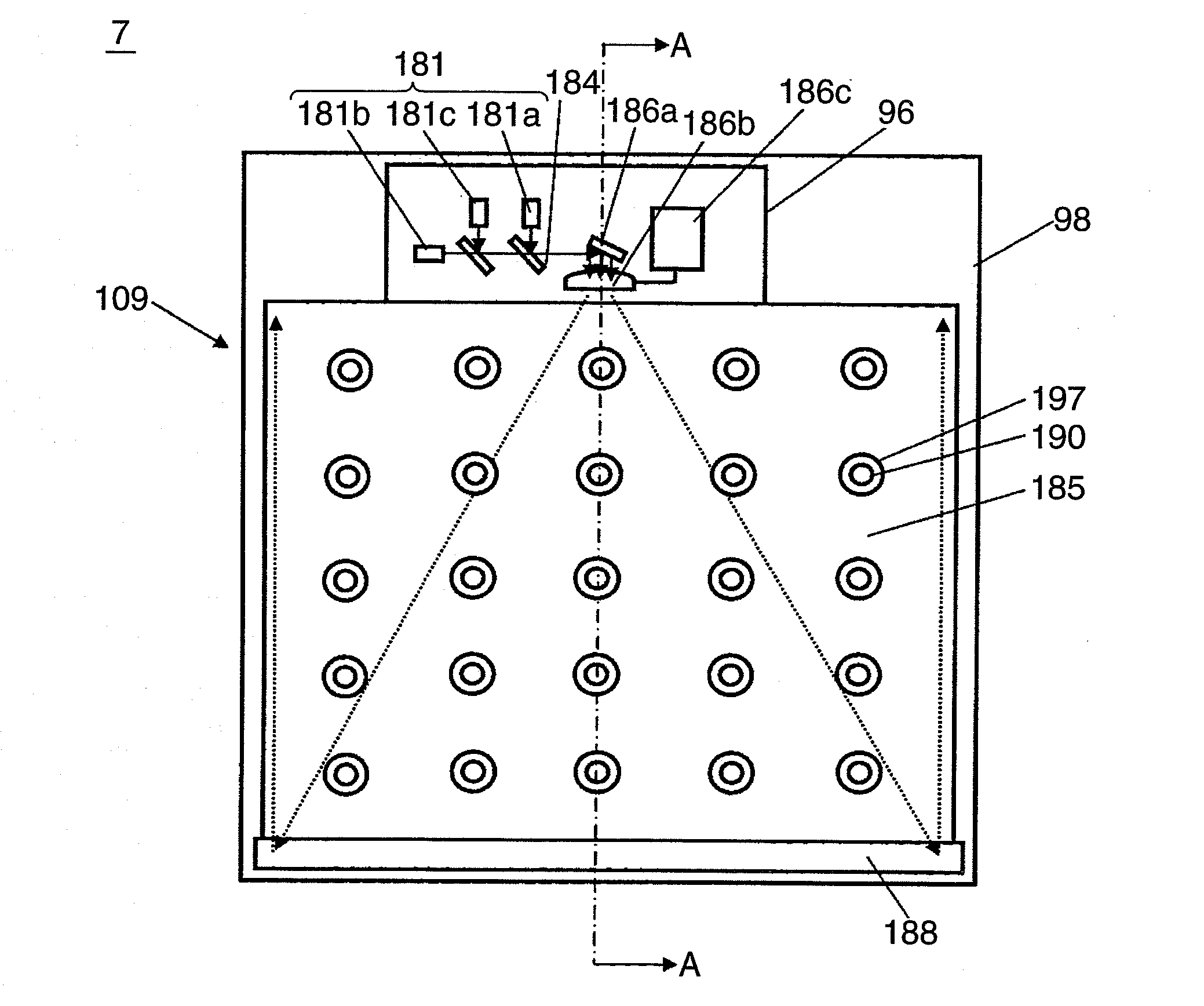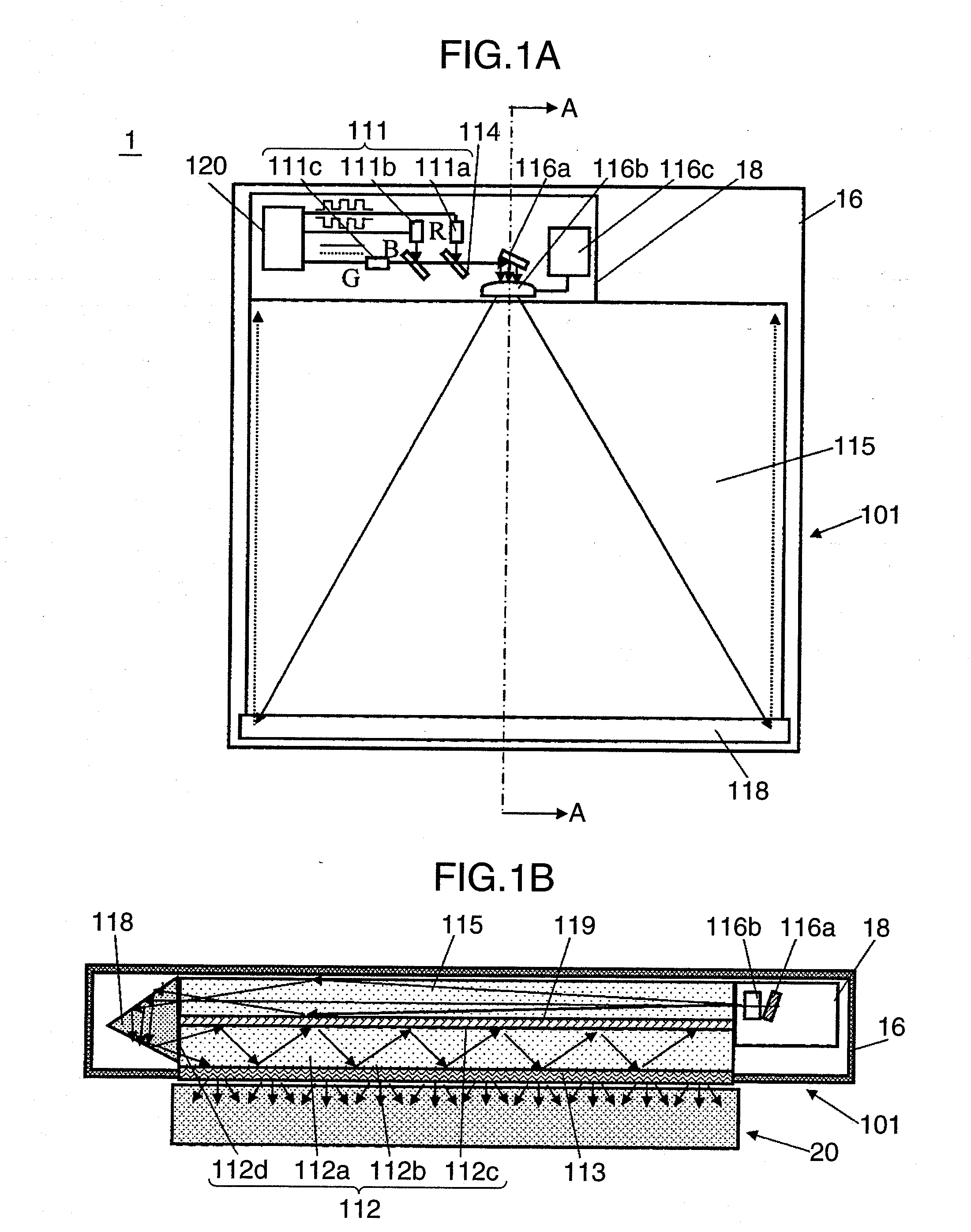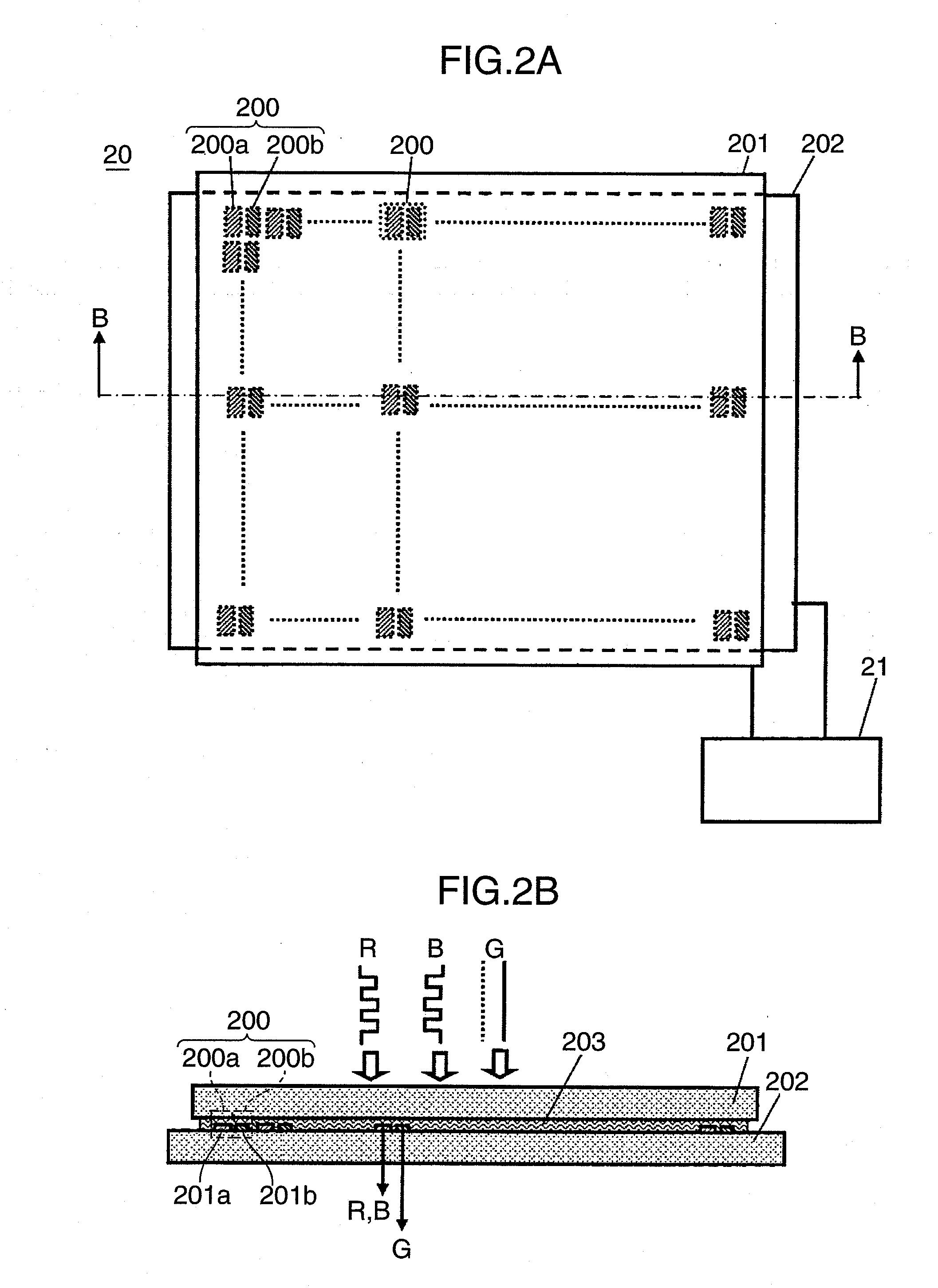Liquid crystal display device
a liquid crystal display and display device technology, applied in the field of can solve the problems of reducing power consumption, deteriorating utilization efficiency of backlight illumination, and difficulty in increasing the aperture ratio of conventional active matrix liquid crystal display devices, so as to improve resolution and aperture ratio, improve the effect of moving image and improving the aperture ratio
- Summary
- Abstract
- Description
- Claims
- Application Information
AI Technical Summary
Benefits of technology
Problems solved by technology
Method used
Image
Examples
first embodiment
[0042]FIGS. 1A and 1B show a configuration of a liquid crystal display device 1 according to a first embodiment of the present invention, wherein FIG. 1A is a schematic top plan view showing an outline of the configuration of the liquid crystal display device 1, FIG. 1B is a schematic sectional view taken along the line A-A in FIG. 1A. In the illustration of the liquid crystal display device 1, respective surfaces of a housing 16 and a compartment 18 for receiving therein a light source are cut away to show an internal configuration in an easily understandable manner. FIGS. 2A and 2B are conceptual views for explaining a configuration of a liquid crystal display panel 20 for use in the liquid crystal display device 1 according to the first embodiment, wherein FIG. 2A is a schematic top plan view, and FIG. 2B is a conceptual sectional view taken along the line B-B in FIG. 2A. In FIGS. 2A and 2B, the same element as that in FIGS. 1A and 1B is defined by a common code. With reference t...
second embodiment
[0078]FIGS. 4A and 4B show a configuration of a liquid crystal display device 2 according to a second embodiment of the present invention, wherein FIG. 4A is a schematic top plan view showing an outline of the configuration of the liquid crystal display device 2, FIG. 4B is a schematic sectional view taken along the line A-A in FIG. 4A. The same element as that in FIGS. 1A and 1B is defined by a common code, and its description will be omitted on a case-by-case basis. In the illustration of the liquid crystal display device 2, respective surfaces of a housing 26 and a compartment 28 are cut away to show an internal configuration in an easily understandable manner. The liquid crystal display device 2 illustrated in FIGS. 4A and 4B is different from the liquid crystal display device 1 illustrated in FIGS. 1A to 2B, in that a light-emitting diode (LED) is used as a light source for use in a light source section. A configuration of a liquid crystal display panel 2 in the second embodime...
third embodiment
[0093]FIG. 5 is a conceptual sectional view showing a configuration of a liquid crystal display device 4 according to a third embodiment of the present invention. The same element as that in FIGS. 1A to 4B is defined by a common code, and its description will be omitted on a case-by-case basis. The liquid crystal display device 4 illustrated in FIG. 5 is different from the liquid crystal display device 1 according to the first embodiment and the liquid crystal display device 2 according to the second embodiment, in that the liquid crystal display device 4 has a projection-type configuration having a projection-type illuminator as the light source section, wherein parallel lights are emitted from the projection-type illuminator to a surface of a liquid crystal display panel, and transmitted lights are displayed on a screen. A configuration of a liquid crystal display panel 20 illustrated in FIG. 5 is the same as the configuration illustrated in FIGS. 2A and 2B. Thus, the following de...
PUM
 Login to View More
Login to View More Abstract
Description
Claims
Application Information
 Login to View More
Login to View More - R&D
- Intellectual Property
- Life Sciences
- Materials
- Tech Scout
- Unparalleled Data Quality
- Higher Quality Content
- 60% Fewer Hallucinations
Browse by: Latest US Patents, China's latest patents, Technical Efficacy Thesaurus, Application Domain, Technology Topic, Popular Technical Reports.
© 2025 PatSnap. All rights reserved.Legal|Privacy policy|Modern Slavery Act Transparency Statement|Sitemap|About US| Contact US: help@patsnap.com



